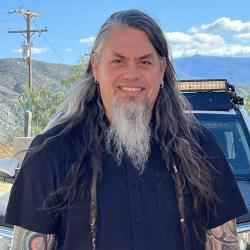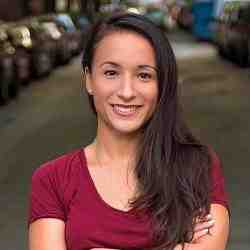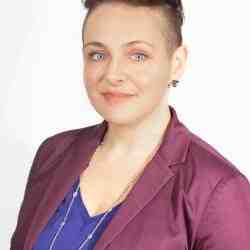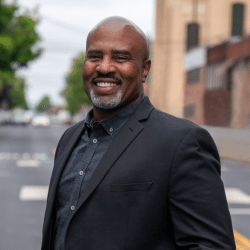前書き
Friar David has led a historical shift in Brazilian’s higher education system by creating the architecture for a movement to guarantee access to education to black, brown, indigenous and other students coming from low-income communities that have been historically excluded. He pioneered and continues to lead a series of strategies to ensure equity in education, which benefits all.
新しいアイデア
Friar David created the architecture for a historic movement that has guaranteed access to higher education for thousands of students nationwide. First, he organized the demand by founding “Pre-Entrance Exam for Black and Needy People” (later renamed “EDUCAFRO Brasil”), the first ever community-based, pre-university entrance exam for black and low-income students in 1993. He created an easily adaptable model in the State of Rio de Janeiro and then spread it nationwide by creating a network of volunteers and community-based educational centers that would replicate the model independently. The courses prepare students to take the universities entrance exam and, at the same time, promote debates on racial and socioeconomic issues and citizenship awareness. As a result of this work, Educafro has guaranteed access to more than 60,000 students to higher education institutions and more than 2,300 community preparatory courses were founded across Brazil, replicating Educafro’s model and scaling the impact even wider to other thousands of students.
At the same time, to increase the supply, Friar David created partnerships with private universities to guarantee scholarships for low-income students. He started with a partnership with the Pontificia Universidade Católica (PUC) of Rio de Janeiro, a nationally recognized and renowned institution, to test the model and show its relevance and validity. Over the years, he has expanded the number of partner private colleges and currently has 9 partner universities providing scholarships for low-income students, including Insper and Fundação Getúlio Vargas, renowned colleges in the country. Understanding the complexity of the problem he was dealing with, Friar David saw that only a systemic change could guarantee access to education for historically marginalized people, and then he set out to create strategies to include more students in the public education system.
Friar David then started a community-based movement to ensure that a portion of the vacancies in the public education system would be reserved for students from historically marginalized populations in Brazil, that is, black, indigenous and low-income students. He did this by organizing EDUCAFRO’s and other community-based preparatory course’s students, taking this agenda to major media outlets and representing the black movement in national decision-making spaces, such as the Congress. As a highly respected leader in the historical struggle for access to education, Friar David led a movement that joined together many highly relevant social leaders and organizations across the country in favor of the Racial Quota Law, established in 2012. This historic achievement promoted the increase of black and low-income students enrolled in the public higher education system, advancing in the elimination of a historical educational inequality in Brazil.
問題
The black, brown, and indigenous populations have been historically and systematically discriminated against and the lack of access to quality education, both in the basic and higher cycles, is one of the many inherited consequences of colonialism and slavery. These populations suffer the most from violence, lower wages, and racist crimes in the country, a pressing issue considering that currently, 56% of the general population self-identify as black or mixed race, making up the majority of the Brazilian population ((data from the Continuous National Household Sample Survey 2022).
Notwithstanding, among the 10% with the highest per capita income, whites accounted for 70.6%, while blacks accounted for 27.7%, while among the poorest 10%, this is reversed: 75.2% are black, and 23.7% are white. The systematic and historical discriminations have not only structurally relegated them to poverty, but also hindered their possibility of dreaming or knowing how to access a better life, like entering a Higher Education Institution (HEI).
Structurally, the entrance to HEIs is mediated by the “vestibular”, a series of long exams compiling all the subjects studied in high school, essentially an exclusionary and meritocratic selection process considering that good quality education is not available to all. Especially because during the dictatorship there was a scrapping of the public education system favoring the marketization of education and consequently its privatization, being expensive to study and be capacitated to join HEIs. This process coupled with structural discrimination created a sense of inaccessibility to those coming from low-income families, that are mostly composed of blacks and browns in Brazil. Education then presented two paths: one for the rich from primary school to gymnasium, from gymnasium to high school and, later, the option of any higher education course, and another for the poor, if they were able to access education at all, from primary school to vocational courses only. To give the scenario in numbers, in 1997, the proportion of young people over the age of 16 in higher education was only 1% for black people. In 2017, the percentage of black students attending higher education had only increased to 2.8%.
These mechanisms of institutional discrimination benefitting the white and rich in accessing HEIs, hinder poor, black, brown, and indigenous groups from accessing positions of power that are usually reserved to those who have a higher education degree. Even though the number of students from low-income communities, and black, brown and indigenous people who have access to university has risen in the past 10 years, they face many challenges related to staying enrolled and completing higher education degrees. Most of them continue to work full-time to cover their education costs and often support their families financially. Due to this additional burden, black, indigenous and low-income students take more years to complete the degree - not because of failure, but because they can’t take the same number of credits each semester as other more well-off students. There is also a lack of stability, not only financial support, but also elements related to psychological and emotional support, and an overall non-welcoming environment, leading to higher dropout rates among black and brown students. Therefore, although there is a rise in enrollment, there are still many challenges that prevent these students from graduating.
戦略
In 1993, after gathering a meeting with the Franciscan youth in São José do Meriti, in the parish of the Franciscans, Friar David identified that for every 100 young people from low-income and historically marginalized communities, only 1 wanted to go to college, Friar David took action to change this reality. These young people were used to providing services in precarious jobs and had little to no knowledge about how to have access to higher education. Realizing that they would most likely continue to have the same living conditions if they did not have access to education, Friar David founded the first ever community-based, pre-university entrance course to train students from low-income and historically marginalized communities for the universities entrance exams.
The model created by Friar David was heavily based on volunteer work. The teachers were volunteers, and the classes took place in existing structures such as church centers, headquarters of residents’ associations, community centers, and schools, among others. His model states that each educational center must cover the subjects required for the university entrance exam, such as Portuguese, Maths, Chemistry, etc., as well as Culture and Citizenship classes. These classes qualify the student beyond the entrance exam, something rare among these prep courses. They would discuss issues of racial justice and young people’s self-esteem and the history and importance of black people to the country. At first, the course was named “Pre-Entrance Exam for Black and Needy People” (PVNC). At the time a private university reached out saying it would only continue granting scholarships through an institution with a legal registration of its own. It was then Friar David and his team changed the name from PVNC to "EDUCAFRO Brasil" and established an official organization.
From the beginning, Friar David did not want EDUCAFRO Brasil to be just an institution, but rather part of a movement. After launching and proving the model, he began to spread it through media, lectures, meetings in grassroots communities, and meetings of the national black movement. Because the community pre-university course model designed by EDUCAFRO could be easily adapted and replicated in different contexts – bringing together volunteer teachers, teaching citizenship and culture classes beyond the traditional disciplines, and using physical spaces that were already part of the community’s daily lives – the model began to spread quickly to other cities and states such as Rio Grande do Sul, with the pre-university entrance exam course “Zumbi dos Palmares” and Maranhão, called “Pre-NEC”. Two years after the launch, there were already more than 34 centers inspired by the model created by Friar David spread across different regions. To date, EDUCAFRO Brasil has directly guaranteed access to higher education for more than 60,000 black students. In addition, there are more than 2300 community pre-university courses spread throughout the country that guarantee access to higher education to thousands of students.
In parallel to this work, Friar David led a group of Catholics in São Paulo and proposed to Cardinal Dom Paulo Evaristo Arns that he made a gesture of reparation to the Afro-Brazilian community by granting scholarships at the Pontifical Catholic University of São Paulo (PUC-SP). The dean of PUC-SP, at the time, rejected the proposal as he considered it a racist proposal, discriminatory against white students. The strategy, then, was to add the word “needy” to include people from low-income communities to the scholarship proposal. Led by Friar David, the group set out an agreement with PUC-Rio de Janeiro, a renowned university in the country, which granted scholarships to more than 700 low-income students living in Rio de Janeiro in just 10 year. By doing this, Friar David wanted to guarantee that after being approved in the entrance exam of a private university, the students would have financial conditions to enroll and graduate. It was strategic to set up the agreement with PUC-Rio de Janeiro as it is an institution perceived with high respect, so it had the potential to set this up as a “good practice” and “desirable” among other private universities. Throughout the years, Friar David managed to partner with nine other private universities, guaranteeing scholarships for students from historically marginalized and low-income communities.
In the Brazilian public education system, which is free, the challenge was different. Low-income students were initially excluded from the public higher education system due to the payment of registration fees for the entrance exam and also due to the complexity and high competitiveness of it, which functioned as an exclusion mechanism, as it mainly favored the entry of high-income students, who had better learning and living conditions throughout their educational journey. By the 2000s, Friar David was well-known and respected inside the black movement and together with many other social organizations, demanded from public universities that they implemented practices to increase the diversity of their students. A public movement for public universities in Brazil to allow the poor to take their entrance exams without paying the high registration fees, which in some cases were equivalent to a third of the minimum wage, began. The institutions refused, leading Friar David to start a legal war against public universities, with more than 200 suing cases, of which he won more than 80%. Universities, one by one, began to adopt the system where early birds did not have to pay. Even so, Friar David assessed the measure as racist: while students who could afford to pay had an average of 30 days to register, the poor had an average of 5 days.
In 2003, as a result of the black movement’s co-led by Friar David, the Legislative Assembly of Rio de Janeiro approved a law that stated that the Universidade Estadual do Rio de Janeiro (UERJ) allocates 20% of vacancies in state universities to black people and 20% of vacancies to public school students, who are mostly from low-income families. The following year, in 2004, the Universidade de Brasilia (UnB) also implemented racial quotas into their entrance exams for the first time. Soon after UnB’s implementation of racial quotas several other federal universities began to reserve vacancies for public school students and black, and indigenous candidates. However, there was no standardization, and each institution defined its criteria.
Friar David saw in this an opportunity to lead a movement that demanded and put pressure on the national adoption of these practices as a federal law. He led a strong community-based movement to ensure that a portion of the vacancies would be reserved in the public school system for students coming from historically marginalized populations in Brazil, that is, black, indigenous, and low-income students. At the time, there was a strong debate about the validity of including racial criteria to the quotas, as many groups defended that only income should be considered. This argument, however, does not consider the intersectionality of race and class in Brazil, nor the ways in which racism operates historically to generate inequality of opportunities in education and the labor market. Friar David organized EDUCAFRO Brasil’s group of students, teachers, and coordinators as important protagonists in the struggle for national quotas by putting pressure on politicians, especially on voting days, by organizing mobilizations in the capital, promoting awareness about the need for racial and socioeconomic quota law in media outlets, and representing the black movement’s interests in public debates around the issue.
Friar David was seen as an extremely relevant figure in this process and a leader in this debate due to his historic struggle and EDUCAFRO Brasil’s pioneering role guaranteeing access to education for black and low-income communities. When Friar David created EDUCAFRO Brasil in Rio de Janeiro, which later spread across several regions around the country, he was responsible for creating a network of young people from low-income communities who would question and assertively guide the discussions about the need and conditions to study at Brazilian public universities. The creation of EDUCAFRO Brasil led to a change in these students’ mentality, who began to dream of accessing the best universities in the country and question why they were excluded from them - exactly the kind of architecture that Friar David had been creating for this movement and historical shift throughout many years.
In 2012, after years of struggle and mobilizations led by Friar David in a collective effort with many other social organizations spread across the country, such as Instituto Geledes, founded by Ashoka Fellow Sueli Carneiro, the Law was approved and established that in Federal Public Universities, 50% of available spots are to be reserved for public school students, of which 25% are to be exclusively accessible to black and indigenous people receiving up to 1 and a half minimum wage per family member (about US$300). Universities are free to separate vacancies for other populations in situations of social vulnerability, as has already been done with some universities to have trans and refugee people in their student body. By the nature of the law, it reaches low-income students, as the criteria is set firstly by class and then by race.
The National Racial Quota Law for university access ignited a cascade movement that then led to the same model being implemented to guarantee access of black people to public service, and years later to guarantee the proportionality for black candidates in political representation and elections, approved by the Supreme Court. Friar David led many of these mobilizations as well as negotiations where he represented black people’s interests by providing data and arguments based on evidence in order to achieve these systemic changes. As a result of the approval of the National Racial Quota Law, the proportion of black or brown people attending higher education in Brazilian public institutions reached 50.3% and the proportion of students from the public school system reached 50.6% in 2020. This was the first time in the country’s history that these portions of the population exceeded half of enrollments in public universities and colleges.
Friar David continues to drive the debate and raise awareness around the social and racial justice agenda especially in the fields of education and employment. His efforts have helped the inclusion narrative catch on in the mainstream media, through his allies in major national media outlets like Folha de São Paulo and CNN. For the future, Friar David is focusing on guaranteeing that students have the conditions to keep enrolled and graduate after entry through quotas; expanding access to postgraduate courses; ensuring access to the labor market, especially in emerging technology-related sectors; overseeing the effective implementation of quota laws, by providing data and evidence of the positive effects generated for society as a whole; and, strengthening the movement’s international reach, mainly through links created with the black movement in Colombia.
人
Born in Nanuque, in the Jequitinhonha valley in Minas Gerais, David is the fifth of seven children. His father was a merchant and his mother a housewife. His family moved to Vila Velha, Espirito Santo, when he was just a year and a half. At the age of twelve, he felt called to become a Franciscan, but with the guidance of his family, he realized that he was not old enough to make that choice yet and instead, when he became a teenager, he attended the federal technical school in Espírito Santo. His dream was to be a civil engineer and his family invested a lot in his studies. He took the entrance exam and was accepted. Friar David left school employed in the communications sector, took a specialization course in the area and became the sector coordinator, but he did not feel completely fulfilled.
At the age of 20, in 1976, Friar David entered a Franciscan seminary for a first experience in Guaratinguetá, São Paulo, as he felt called to serve the population, especially the poorest. At the seminar, a group called him black, and he felt offended. He decided to leave, but then one friar talked to him. In this conversation, the friar presented the concept of “whitening ideology” and said, “The only way to get free is to assume that you are black and take it as joy, pleasure and pride”. David had not been in contact with the history of black people before. He became aware of this fact and started to read books about the topic and educate himself on racial issues in Brazil. He then felt the urge to spread this knowledge in order to get more people to be aware of black people’s history and their racial identity.
He then created a group called “unity and black conscience” to gather Catholics from each parish to discuss about race issues, promote awareness of the history of black people in the country, its erasure and its effects on the present. Wherever he went, he organized spaces for these discussions so that more people could get in touch with black people’s history and talk about their racial identity. At first, it was very difficult to convince people to go to these meetings because people did not feel comfortable or called to discuss these topics. He made numerous attempts to discuss the subject with other black people at seminars, events, and meetings he attended. He faced a lot of resistance and rejection at the time, but he was firm in his goal and still was able to create those spaces and gather people to talk about the issue. David wanted to put the structure of the Church at the service of poor people, most of them black people in Brazil. So, on his missions in the community, he held these meetings and organized slideshows to increase people’s knowledge as well as their self-esteem and pride.
He completed his novitiate in one year and was approved for the faculties of philosophy and theology in Petropolis, Rio de Janeiro, where he went to live. At that time, in Petrópolis, more than a thousand people lost their homes in a landslide due to heavy rain. Friar David then started a community mobilization to pressure minister Mário Andreazza to rebuild the houses within the 90-day deadline that had been promised and was successful in this quest. In Petrópolis he also created the “Grupo de União e Consciência Negra” (Black Union and Consciousness Group) and the “Catholic Youth Workers” and successfully led the movement of the homeless and the unemployed for some years. Friar David was then expelled by a superior bishop who considered his behavior subversive and transferred to Duque de Caxias cathedral, also in Rio de Janeiro. There, at a meeting with young people, he realized that very few black and low-income young people intended to attend University due to lack of financial conditions or even knowledge of how the entrance exam worked. Friar David noticed that the lack of incentives to access higher education relegated these young people to precarious jobs and prevented them from having access to better living conditions. This issue sparked his attention, and this was the moment when he conceived EDUCAFRO Brasil’s model that combines training for the universities entrance exam with citizenship education, fostering social and racial awareness among young people.
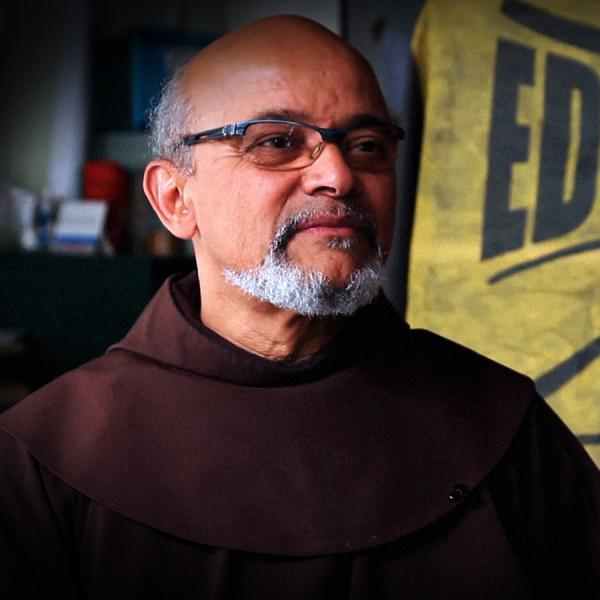
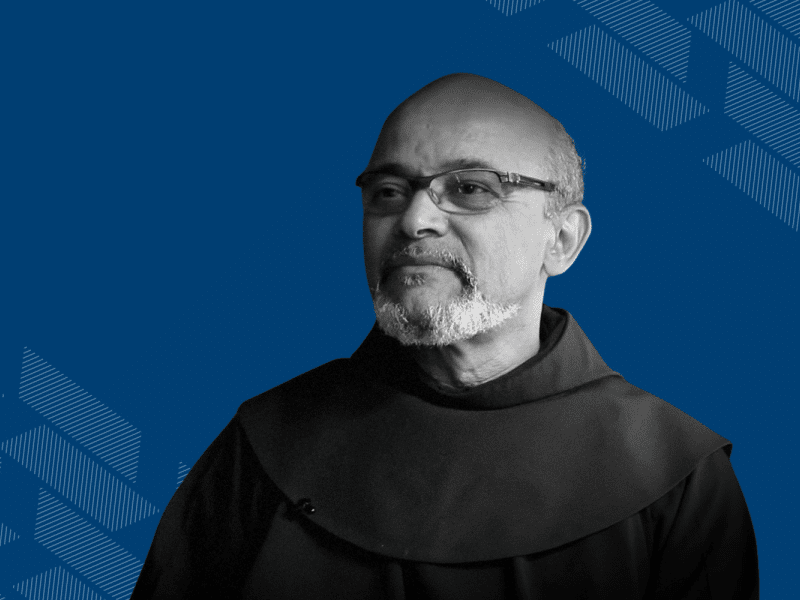 Tile image
Tile image